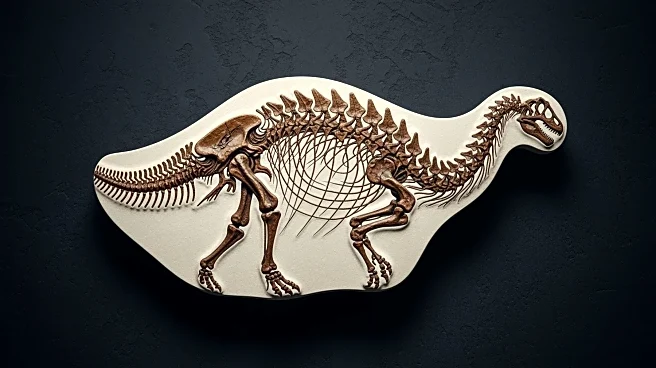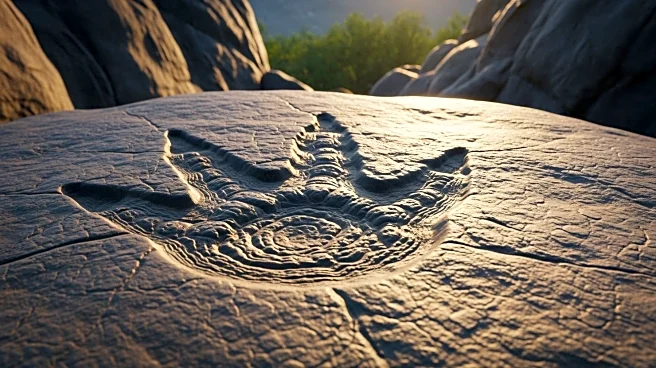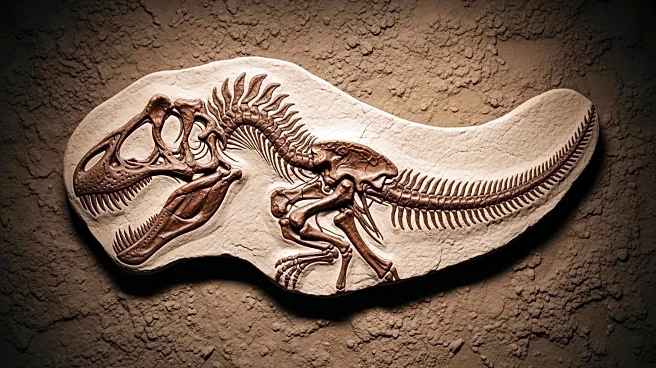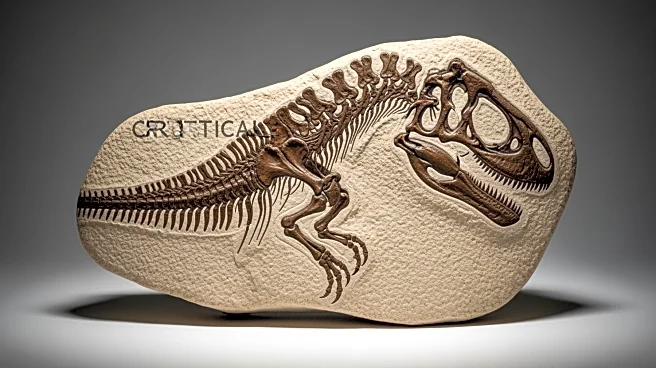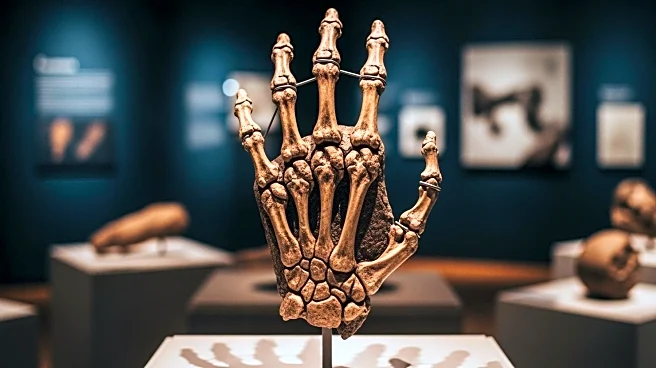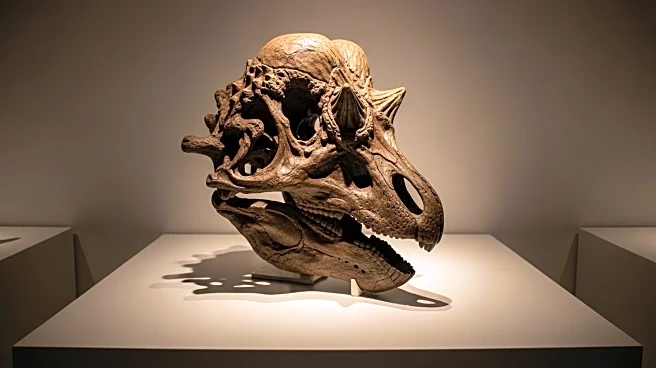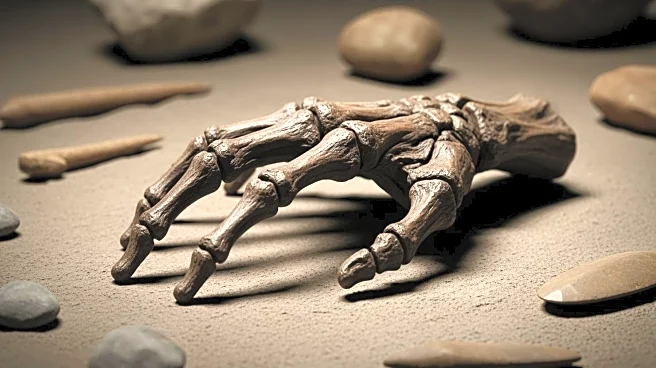What's Happening?
A team of paleontologists has uncovered a fossil in the Argentinian Andes that challenges previous understandings of sauropod evolution. The fossil, named Huayracursor jaguensis, dates back to the Triassic
period, approximately 230 million years ago. This discovery suggests that the development of long necks in sauropod dinosaurs began much earlier than previously believed. The Huayracursor jaguensis was a small dinosaur, about 2 meters long and weighing around 18 kilograms, with the first indications of the extended neck characteristic of later sauropods like Diplodocus. Previously, it was thought that sauropodomorphs, the precursors to long-necked herbivorous dinosaurs, were small, short-necked, and possibly omnivorous. The discovery of Huayracursor jaguensis indicates that increased body size and neck lengthening were evident from the beginning of the evolutionary history of its lineage.
Why It's Important?
This discovery is significant as it reshapes the understanding of dinosaur evolution, particularly the development of sauropods, which include some of the largest animals to have ever lived. The finding suggests that the evolutionary traits of increased body size and elongated necks were present much earlier than previously thought, indicating a more complex evolutionary process. This could lead to a reevaluation of the timeline and environmental factors that influenced the evolution of these massive creatures. The research provides new insights into the adaptability and evolutionary strategies of early dinosaurs, potentially impacting the study of paleontology and evolutionary biology.
What's Next?
The discovery of Huayracursor jaguensis may prompt further paleontological exploration in the Argentinian Andes and other regions to uncover additional fossils that could provide more information about early dinosaur evolution. Researchers may focus on examining the environmental conditions and ecological factors that contributed to the development of sauropods' distinctive features. This could lead to new theories and models regarding the evolutionary pathways of dinosaurs, influencing future studies and educational materials in the field.
Beyond the Headlines
The implications of this discovery extend beyond paleontology, touching on broader themes of evolutionary biology and the adaptability of species over time. It highlights the importance of fossil records in understanding the history of life on Earth and the complex processes that drive evolution. The findings may also inspire discussions on the role of environmental changes in shaping the physical characteristics and survival strategies of species, offering valuable lessons for current biodiversity and conservation efforts.
